How Companies Can Harness The Power Of Employee Engagement
-2.jpg)
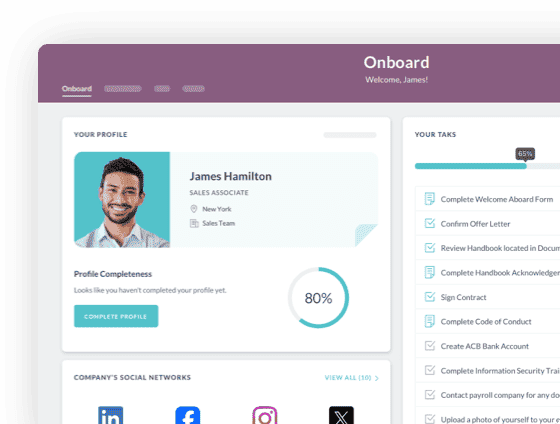
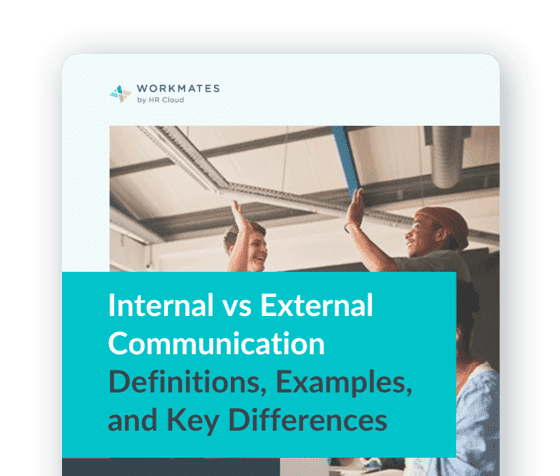
 Cut onboarding time
by 60%—here's the
Ultimate Checklist
that helped do it.
Cut onboarding time
by 60%—here's the
Ultimate Checklist
that helped do it.
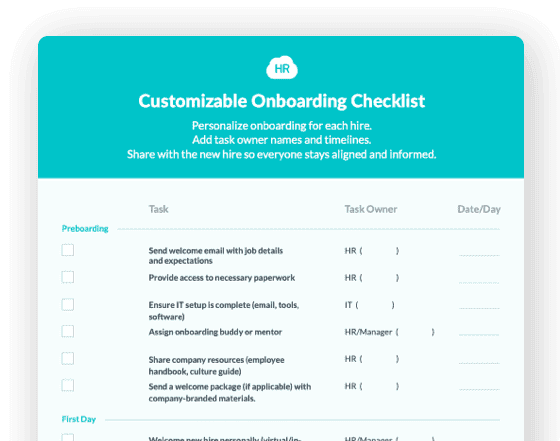
The concept of employee engagement is a hot topic.
In fact, it's become so popular that many companies have started implementing employee engagement programs to improve productivity, boost morale, earn employee referrals, and increase overall performance.
It seems to be working. A study by Gallup showed that a company with higher employee engagement could boost profitability by 21% and productivity by 17%.
But one thing that many people don't realize is that employee engagement isn't just about happy employees — it's also about how much they care about their jobs and how invested they are in their company's success.
In this article, we'll define employee engagement and discuss ways your company can harness the power of employee engagement for long-term business success.
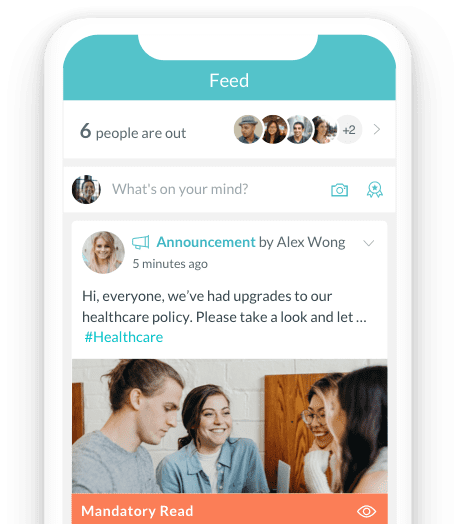
What is employee engagement?
Before you can start harnessing the power of employee engagement, you need to understand what it is. Employee engagement measures how committed an employee is to an organization. The activity of employee engagement can make it easier with the help of an employee handbook in which you can find the do’s and don'ts of an employee.
Studies show that high levels of employee engagement are positively correlated with organizational and departmental performance because employees who are engaged tend to be more productive and satisfied in their work environment.
So what does this mean for your company? If you want your employees to become more engaged in their jobs, it's essential to understand, measure, and make improvements in areas of employee engagement where you fall short.
How do you measure employee engagement?
Unfortunately, it isn't as easy as counting the number of employees who show up to work with a smile on their faces. Some of your highest-performing employees may not be smiling at all and take their work very seriously. So you need to get creative and consider the larger picture of what's going on in your company.
Here are a few effective ways to measure employee engagement.
-
Ask your employees what they think about the company: You can do this by using anonymous pulse surveys or simply asking them directly.
-
Review employee survey results: Identify areas that are impacting engagement levels and then determine ways that you can address those issues. (i.e., if employees say they're frustrated with their workloads, consider hiring more staff).
-
Check retention and turnover rates: These metrics will give insight into whether there are problems within a specific department.
-
Consistently gather feedback: After a meeting or an event in your company, check in with your team to gather employee feedback or thoughts.
-
Understand your Employee Net Promoter Score (eNPS): eNPS is a straightforward metric that asks employees to answer the question, "How likely are you to recommend your company to a friend or colleague?" on a scale of 0 to 10. If every employee rates your company highly, then your company must be doing something right.
5 ways to harness the power of employee engagement
Next, let's explore five practical ways to harness employee engagement, improve employee well-being, and drive long-term business success.
1. Empower your employees to do their best work
Employees who feel empowered are likely more engaged and motivated, leading to increased productivity. However, according to The State of High Performing Teams, 20% of managers agree empowering the team is their number one challenge. Empowerment is the ability of an employee to make decisions and control their work by having the right access to the tools, support, and resources they need to succeed.
Remember that empowerment is a two-way street. As a manager, it's equally important to seek out opportunities for empowerment yourself — even if it means taking on extra responsibilities or projects outside your job description.
Employees will notice this kind of initiative from you — even if it may seem like too much, it sends a message that encourages others around you. As the saying goes, "monkey see, monkey do."
2. Leverage the power of recognition
The power of recognition is undeniable: A study by Deloitte found that companies who implemented recognition programs saw a 14% increase in engagement compared with those who didn't.
Recognition is a powerful motivator. We're all looking for validation from others, and when someone recognizes our hard work and accomplishments, it can be incredibly motivating. It's also one of the easiest ways to show your employees you care about them and their work.
But providing recognition is more than just a quick pat on the back — it's a way to tell your employees that they've done something significant and that their work matters. The most effective recognition is honest, authentic, and tailored to each employee. It can be as simple as saying "thank you" in person or a small gift or bonus. Whatever form it takes, the point is to show your employees that they have a positive impact on the team and the company overall. Employees don't want to feel like a cog in the machine.
3. Don't forget about remote workers
The key to boosting employee engagement and productivity is happy employees.
Many factors influence how happy employees are, and one of them is flexibility at work. In the past couple of years, companies have offered employees more flexible working conditions like remote or hybrid work environments. Considering that relocating for work is one of the main reasons people move, providing flexibility in working locations can remove a lot of stress and reduce costs. Not only that, but it can increase productivity by 43%.
Remote workers are just as much a part of your team as those who sit in an office with you, and they should feel that way from day one.
At times this might be easier said than done. Without face-to-face interaction, you may find it harder to get to know each other and build relationships with people who work remotely. But there are ways you can make engagement less challenging for both parties involved.
For example, consider holding regular video conferences so that everyone can interact on an equal footing. Other methods include virtual happy hours, where everyone grabs their beverage of choice from the fridge and hops on a Zoom call for thirty minutes after work.
4. Provide ongoing training and career development
49% of employees would like to develop their skills but are unsure how to find the right opportunities. Providing ongoing training and career development is a great way to improve employee engagement and keep them motivated. More than 90% of employees agree that they'll stick around for longer if a company invests in their careers.
The 40 Best Thank You
Messages for Colleagues
building a positive and engaged culture at your company.

Training can take place in-person, online, or a combination of both, and can be on-demand or scheduled as needed by your organization. In addition to providing employees with the skills they need to perform their jobs effectively, ongoing training is essential for keeping them up-to-date on industry trends and best practices.
Making sure all your employees have the correct training and tools will allow them to thrive within their assignments. As a manager it's fundamental you find the best sales software for your sales team or the best social media tool and resources for your marketing team.
Choose the type of employee training that fits your organization's needs. You can have internal staff provide some sessions or use an external vendor specializing in specific types of training, like leadership programs.
5. Offer mentorship opportunities
Mentorship programs are a great way to help your employees grow and develop their skills. Mentors can be invaluable in supporting people in building confidence and advancing in their careers. They can also provide helpful insights into how things work at your company and offer tips for success.
In fact, research has shown that mentorship programs have positively impacted employee engagement because they help employees feel less isolated and more connected with the organization. Mentors are often more senior than mentees, and they're usually able to share their experiences with their protégés. Having someone willing to guide you through your career can help you feel like you belong at work — and this feeling of belonging is essential for high levels of employee engagement.
Something to be mindful of is that mentors can experience burnout too. After all, they’re taking on a lot of responsibilities. There are many educational resources to help with the teaching process.
Mentorship programs don't have to be formal. Some companies assign experienced employees as informal mentors for newer staff members. However, it's worth considering whether there could be value in creating formal opportunities for your team's professional development if it hasn't been done so already.
Wrapping up
While developing your employee engagement strategy with an employee app, it can be easy to improve the little things like free coffee or to encourage weekly employee happy hours. But you need to remember that harnessing the power of employee engagement isn't just about fun and games — it's about improving overall company performance through increased productivity and job satisfaction.
Of course, all those small things still compound and will help improve your eNPS. But if you want to build a better business, it's time to start thinking about engaging your staff and empowering them with opportunities to do their best work.
Employee engagement is a powerful force that can drive your company to long-term business success. Invest in the appropriate employee engagement software to help guide and track employee engagement along the way.
About Author:
Amal is the Content Marketing Manager at Hopper HQ, a leading social media management tool helping thousands of the world’s biggest brands, agencies and influencers easily plan and manage their social media in no time.
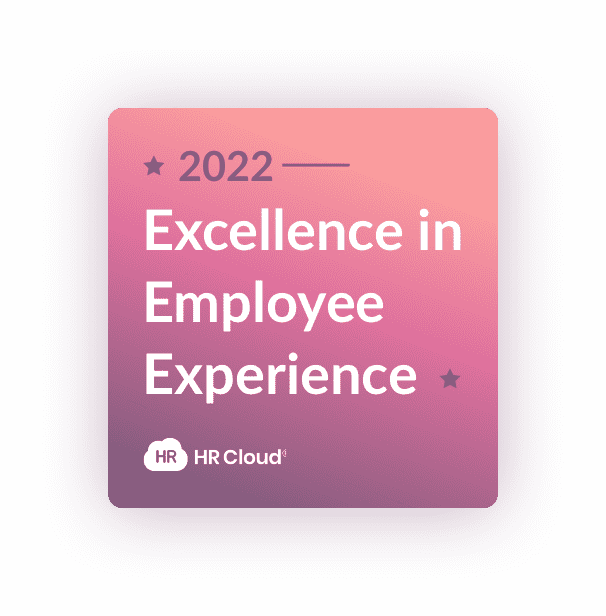
The HR Cloud Award
for Excellence in Employee Experience
Participation is free and winners receive:
- A $25 Amazon Gift Card
- Feature on the HR Cloud website and social media
- Digital badge + certificate to share on your website recruitment materials
Keep Reading
15 Proven Ways to Create a Healthy Work Environment (2026 Guide)
A healthy work environment is a workplace where employees experience psychological
Best Workday Alternatives for Mid-Market Companies in 2026: Complete HRIS Comparison Guide
"We implemented Workday and our HR team still can't figure out half the features six
Company Culture Software: How to Build a Thriving Workplace in 2026
Ask any business leader what drives lasting organizational success, and you'll hear
Like What You Hear?
We'd love to chat with you more about how HR Cloud® can support your business's HR needs. Book Your Free Demo

Build a Culture of Recognition. Boost Engagement. Guaranteed.
Workmates empowers employees to stay informed, connected, and appreciated—whether they’re on the front line, in the office, or remote. Recognition drives 12x higher engagement.Trusted by industry leaders in every sector




Cut Onboarding Costs by 60%.
Take the confusion and follow-ups out of onboarding with automated workflows, digital forms, and structured portals—so new hires ramp faster 3X quicker.Trusted by industry leaders in every sector





